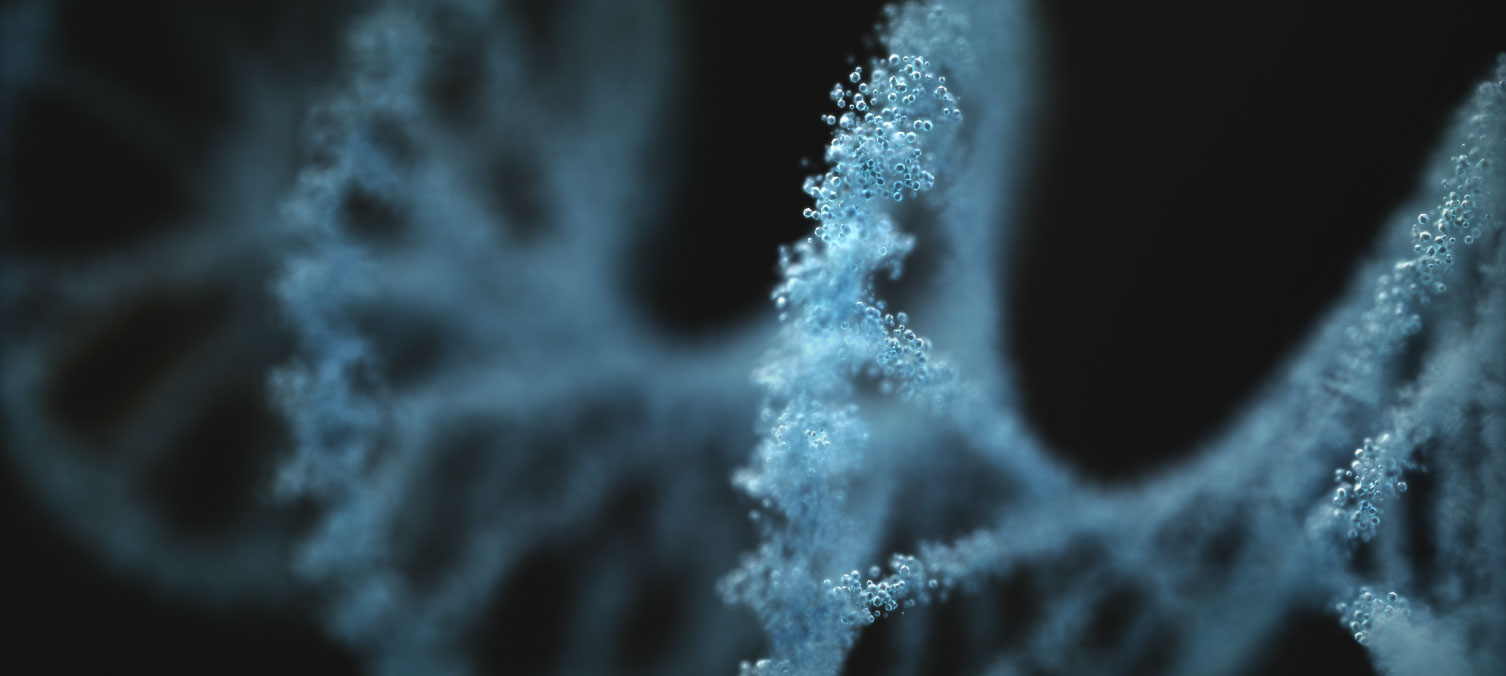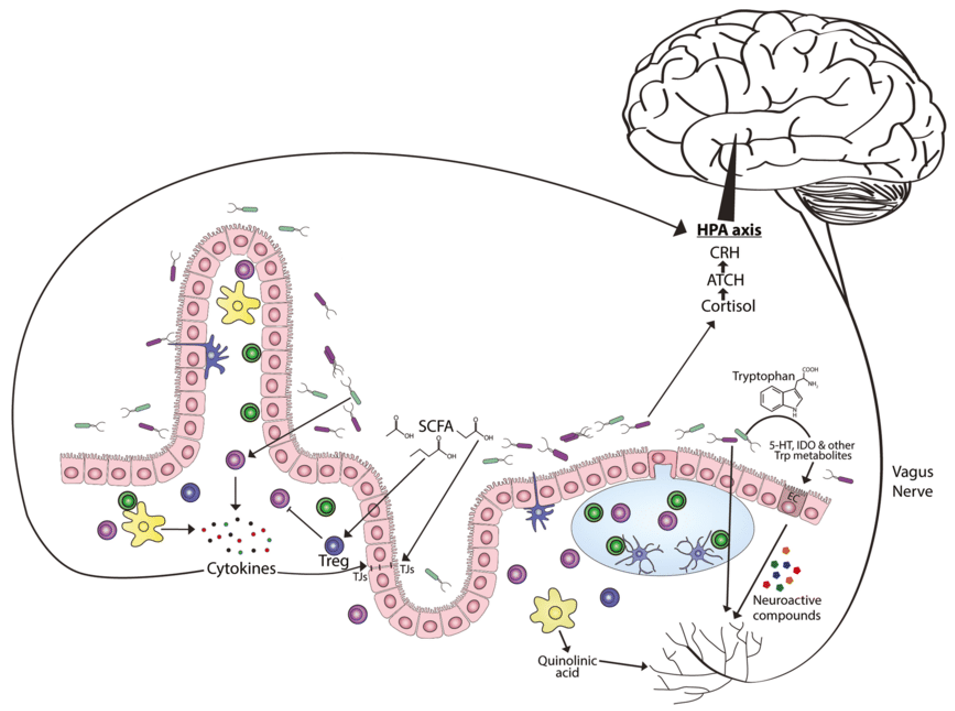Neurotransmitter is an endogenous metabolite that acts as a chemical messenger in carrying, expanding, and regulating signals between neurons and other human cells.
As an important part of the gut-brain axis, gut microbes can affect the brain in many ways. For example, it can secrete and synthesize neurotransmitters (such as aminobutyric acid, dopamine, etc.), produce neurostimulating metabolites that affect the immune system, or produce neurogrowthstimulating substances (e.g., short-chain fatty acids, uranine, etc.), and other pathways (e.g., vagal pathways or the regulation of important dietary amino acids, etc.).
Microbiota-gut-brain axis (Hughes et al., 2018)
CD Genomics has developed a targeted metabolomics method based on LC-MS, which can provide you with absolute quantitative detection services for neurotransmitters. In addition, we can also implement one-stop, personalized data analysis to help you achieve better data interpretation.
What We Can Provide
The neurotransmitters we can detect include but are not limited to the following table. If you want to detect other metabolites that are not in the list, you can contact us.
| γ-aminobutyric acid | Levodopa | Dopamine | Adrenaline |
| Norepinephrine | 3-methoxytyramine | Tyramine | Methoxy epinephrine |
| Hydroxyindoleacetic acid | Serotonin | 5-hydroxy-L-tryptophan | Acetylcholine |
| Histamine | 4-hydroxy-3-methoxyphenylethylene glycol | 3,4-dihydroxyphenyl glycol | 3,4-dihydroxymandelic acid |
| Homovanillic acid | N-acetyl serotonin | Ornithine | Tryptamine |
| Tyrosine | Succinic acid | Ketoglutarate | L-phenylalanine |
| Tryptophan | Kynurenine | 3-hydroxy-o-aminobenzoic acid | Melatonin |
| Dl-4-hydroxy-3-methoxymandelic acid | Glutamate | Glutamine |
Advantages of Neurotransmitter Analysis Service
- Advanced platform: Ultra-high resolution, ultra-high sensitivity and fast scanning speed QE HF mass spectrometry platform is used for detection, with large throughput and more compound information can be identified. Multiple reaction monitoring (MRM) technology is used to achieve precise qualitative and absolute quantitative.
- High-quality database: The primary and secondary mass spectra in the database are all real spectra detected by the high-quality, high-resolution, high-resolution Orbitrap mass spectrometer using standard products. The compound identification accuracy is high.
- Strict quality control: isotope internal standard calibration, external standard method quantification. Manual proofreading of standards. Standard R2>0.99.
- Personalized service: Have a professional information analysis team to analyze the data results. Personalized information analysis can also be carried out according to customer needs.
Sample Requirements
- Serum and Plasma ≥ 100 µL
- Tissue ≥ 50 mg
- Fresh stool ≥ 100 mg
- Freeze-dried stool ≥ 10 mg
- Cell ≥ 1*107
Duplicate samples:
- Animal samples (various tissues, plasma) ≥10 replicates per group
- Microbial samples ≥ 3 replicates per group
- Cell sample ≥ 3 replicates per group
- Clinical samples (serum, urine, various tissues, etc.) ≥20 cases in each group
Data Analysis
- Raw data
- Data preprocessing
- Data quality control
- Metabolite annotation
Reference
1. Hughes, Heather K., Destanie Rose, and Paul Ashwood. "The gut microbiota and dysbiosis in autism spectrum disorders." Current neurology and neuroscience reports 18.11 (2018): 1-15.
*For Research Use Only. Not for use in diagnostic procedures.


